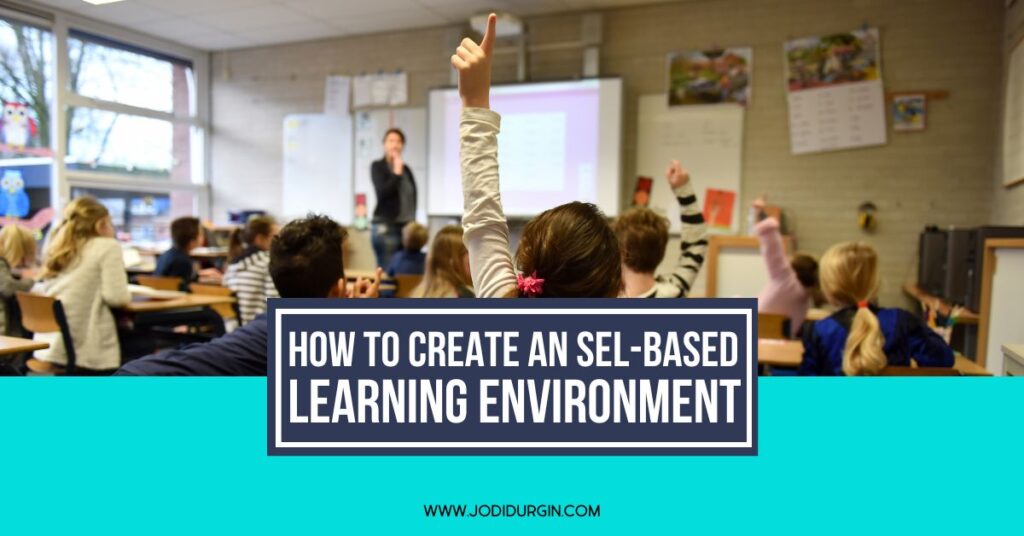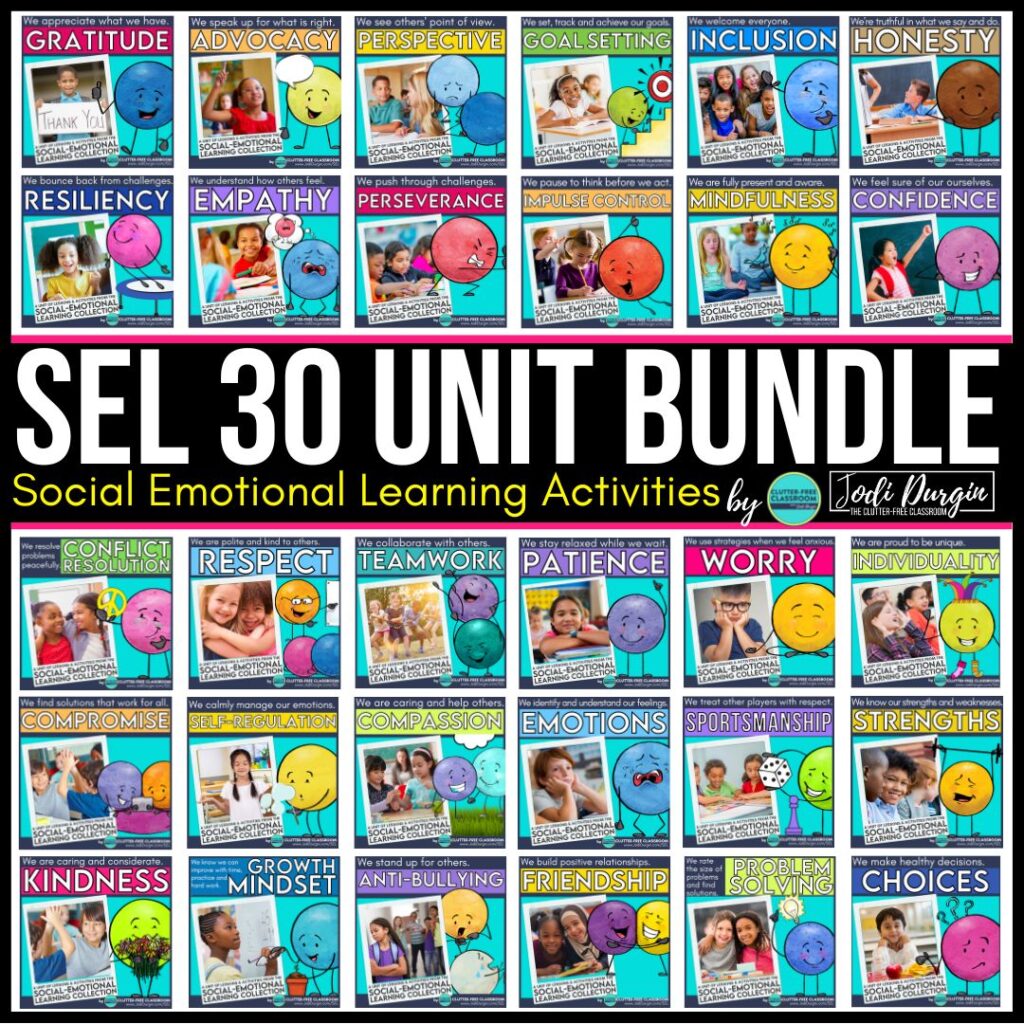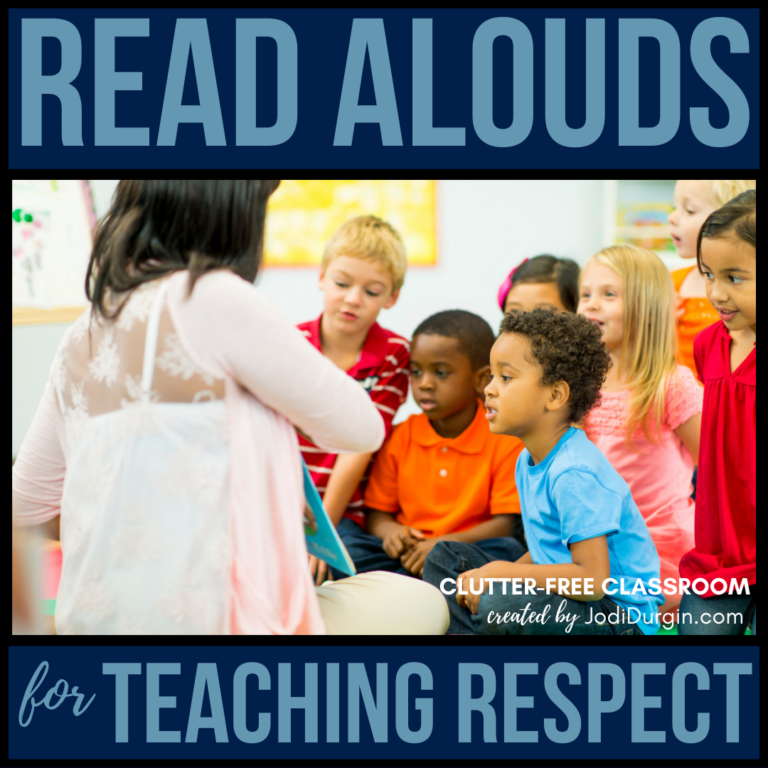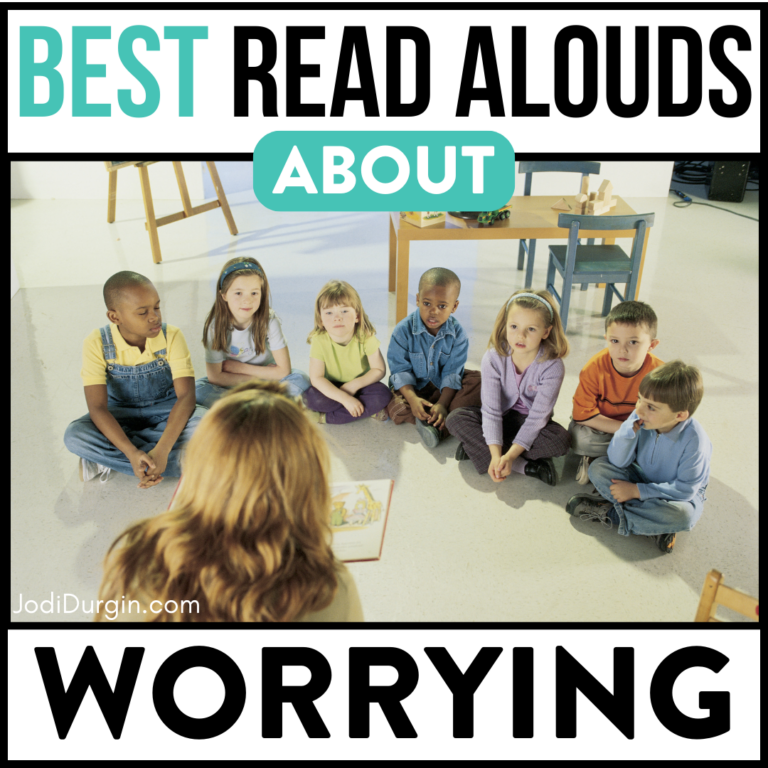There are tons of different things to consider when designing and setting up your elementary classroom at the beginning of the school year. For example, you are thinking about how you can create a numeracy rich environment and literacy rich environment. You’re considering how you can maximize the small amount of space you have in your classroom and creating a smooth traffic flow so students can move about it with ease. Offering flexible seating options, crafting meaningful and purposeful bulletin boards, maximizing storage space… There are so many things to consider! One of the most important, however, is creating a social emotional learning environment.
Read below to learn the answers to the most commonly asked questions about a social emotional learning environment including the following:
- What is an SEL environment?
- Why is having an SEL classroom important for elementary teachers?
- How can I create a social emotional learning environment for my students?

What is a Social Emotional Learning (SEL) Environment?
An SEL environment, which is also called a social emotional learning environment, is a physical space that supports students in developing self-awareness, self-management, responsible decision making, social awareness, and relationship skills.
Why is Having a Social Emotional Learning Environment Important?
Having a classroom that is focused on SEL is important because of the tremendous impact a child’s self-awareness, self-management, responsible decision making, social awareness, and relationship skills have not only on their academic career, but also their future personal and professional lives.
10 Ideas for Creating a Social Emotional Learning Environment
Below are 10 ideas for creating a social emotional learning environment in your elementary classroom. These ideas will support you in designing a space that helps your students thrive this year.
1. Flexible seating
Flexible seating is useful for creating an environment that supports SEL. It creates responsibility in students while also giving them independence.
They get to pick a spot to work and be reflective on whether or not that was a good learning spot for them. It also creates self-awareness as students learn what spots work best for them in the room and why those spots help them learn.
2. Classroom jobs
Classroom jobs are another way for students to be responsible in the classroom. They create an environment where students know everyone has a role in the classroom and works together to keep the classroom functioning.
Hold students accountable for doing their jobs and try to find a job for everyone. Typically, students keep the same job for a week and get a new job the following week. Check out my student job chart!
3. Create a safe place
This should be a place in your room where students can go when they need to calm down, regulate themselves, and take a break. This should be a spot out of direct eye sight from peers. Make the spot cozy and inviting.
To get the most out of your safe place, put a tool kit with resources to help students calm down. These could be stuffed animals, squishies, fidgets, putty, etc.
4. Calming colors
Using specific colors in a classroom is one of my favorite ways to create a social emotional learning environment. Choose calming colors like blues, greens, and purples for your borders, bulletin boards, furniture, and classroom decorations.
Colors that are too bright and patterns that are too busy can over stimulate your students and sometimes cause anxiety. Very bright colors can be fun, but too much of them can have a negative effect on your students. Learn more about how colors can impact student learning in this post all about colorful classroom decor.
5. Grouped desks and tables
Create groups with your student desks instead of having each desk separated or in rows. This will help develop the community in your classroom and promote collaboration.
This also gives students a chance to socialize with their peers and naturally lends itself to group activities you may plan. Switch the groups up so students have chances to sit with different people.
Create table spaces in your room where students can choose to go as an alternative work space. One way to provide alternative work spaces is to put tables at all different heights so students have a standing option and an option to sit on the floor at a table.
6. Decluttered and organized space
Clutter and unorganized spaces cause stress! If you walk into your room and see an overwhelming mess, your students also walk in and see an overwhelming mess.
An unorganized classroom also makes it hard for students to know the routines of the room, which can also cause anxiety. They need to know where to get their supplies, put completed work, and access the materials that they need for the day.
Clutter and unorganized spaces also makes it hard for students to move around the room which can cause confusion. Decluttering and organizing classrooms is one of my favorite ways to create a social emotional learning environment!
7. Anchor charts
Use anchor charts in your room to support the SEL concepts that you are teaching. Students can use the anchor charts independently or with peers to help them solve SEL concepts that they are experiencing.
Create the anchor charts with your students so that they have significant meaning to them and review with your students how to use them as often as necessary.
Be careful not to have too many things on your wall though because it can be overstimulating.
8. Calming music
Studies have shown that playing quiet, calming music during work times can help your students learn and be productive. It also helps create a state of relaxation in your classroom. You can find free playlists on Youtube and Spotify. This is another one of my favorite ways to create a social emotional learning environment!
9. Quiet time
It is important to reserve a spot in your school day for quiet time, no matter the age of your students. Picking the 10 minutes when your students transition back from the lunch room or recess before their academic day is going to begin again can be useful.
Turn down the lights, put on calming music, and tell students that the only rule of quiet time is that there is no talking and that it is a time for them to relax and reflect before continuing their day. Students can rest, read, or draw during quiet time and choose to move to a flexible seating location.
10. Morning greeting signs
Morning greeting signs are signs that you put at the entrance of your classroom.
Students choose how they want to be greeted by their teacher each day and options can include a handshake, hug, high five, fist bump, dance party, etc. This creates a personal connection between you and each student each day and starts the day off with that connection.
If you don’t have time to do this each morning or have a meeting or duty that prevents you from being in your room when the kids arrive, this is a great classroom job to have a student do.
In closing, we hope you found this information about creating a social emotional learning environment in your classroom helpful! If you are looking for SEL resources for your classroom, check out my SEL units!





